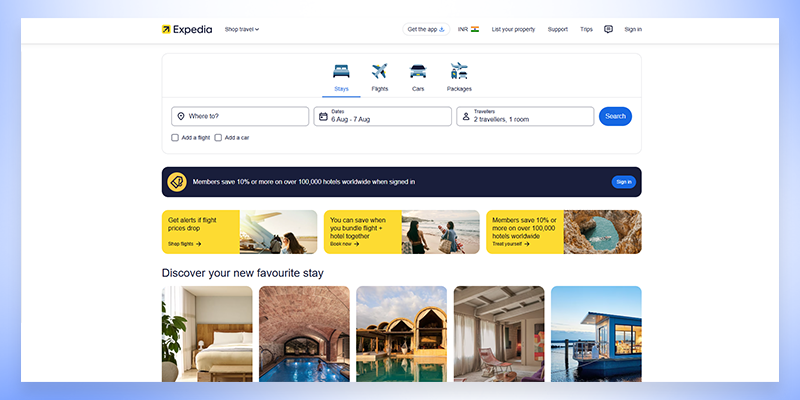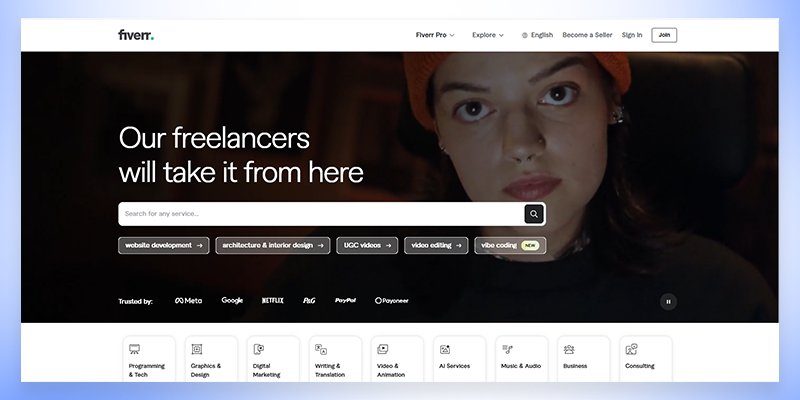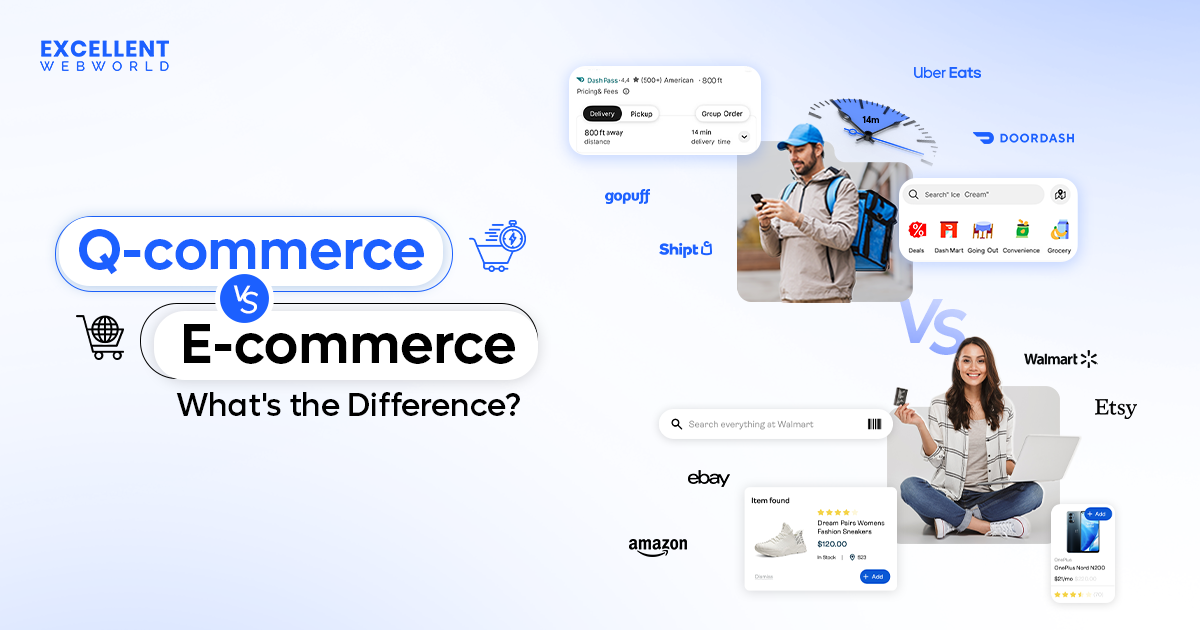Thinking of building a marketplace like eBay, Amazon, or Etsy?
You’re not alone; ecommerce marketplace development continues to be one of the most profitable and future-ready business models. Whether you want to connect buyers and sellers, offer niche products, or create a hyperlocal delivery platform, marketplaces give you unmatched flexibility and scale.
Big players like Amazon, Flipkart, and Etsy have set the standard, but many startups and mid-size businesses are also launching their own platforms by leveraging the power of AI integration in software development.
In this blog, we’ll break down the true cost of building a marketplace website in 2026. From choosing between custom vs no-code options to understanding what features drive your budget, this guide will help you plan wisely.
If you’re ready to create a marketplace or wondering how to build a marketplace website without overspending, you’re in the right place.
Let’s explore everything that goes into marketplace website development and how you can build a marketplace that scales without breaking the bank.
What Is the Cost of Building a Marketplace Website in 2026?
Since you’re planning to build an online marketplace, one of the first questions that comes up is: how much will it cost to build a Marketplace Website? The answer isn’t one-size-fits-all; it depends on several things.
The cost of building a marketplace website in 2026 can range from a few thousand dollars for a basic MVP development to hundreds of thousands for a fully customized, scalable platform, depending on the chosen software development services. The final marketplace development cost depends on many factors, such as:
Understanding the key factors influencing costs early on will help you plan your budget wisely and avoid hidden surprises down the line.
Cost Breakdown by Development Approach
The cost of building a marketplace website can vary widely based on the development path you choose. Here’s a quick comparison to help you decide what fits your budget and goals:
| Development Approach | Estimated Cost (USD) | Best For |
|---|---|---|
| Open-source Solutions | 15k–20k | MVPs, niche marketplaces, and low-budget startups. Mid-scale projects with flexible customization |
| Custom Development | 50k and above | Enterprise-grade marketplaces with complex needs |
While open-source is ideal for fast launches and lean budgets, you may be asking, why opt for custom website development? This is because custom development offers the scalability and control that growing enterprises often need.
Cost Breakdown by Marketplace Type
Different types of marketplaces come with varying levels of complexity, and that directly impacts development costs. According to PwC’s travel and hospitality industry outlook, sector-specific trends significantly shape platform features and overall budget. Here’s a breakdown to help you plan better:
| Marketplace Type | Estimated Cost (USD) | Key Inclusions |
|---|---|---|
| Simple MVP | 15k–25K | Basic listings, cart, payment, and minimal backend features |
| Moderately Complex | 25k–35k+ | Product categorization, reviews, seller dashboards, marketing tools, basic reports |
| Enterprise-Level | 35k–60k+ | AI features, mobile apps, logistics, fraud prevention, multi-vendor scaling |
As your platform grows, the need for advanced features and integrations increases, so it’s essential to align your budget with your long-term vision.
Cost of Building an MVP vs. Custom Marketplace Website Development
Whether you’re just testing an idea or planning to build the next Amazon, your development approach will shape your costs. Understanding the MVP development cost helps you evaluate the right starting point before committing to a full-scale build. Here’s a snapshot of what to expect at different levels:
| Type | Estimated Cost | Ideal For | Key Features |
|---|---|---|---|
| Simple Marketplace Website | 15k–20k | Niche product-focused MVPs | Product listing, search, shopping cart, payment integration, order management |
| Moderately Complex Website | 20k–25k | Regional marketplaces | Advanced search, product categorization, reviews, seller ratings, inventory, marketing tools, basic analytics |
| High-End Marketplace Website | 25k–50k+ | National/Global platforms (like Amazon) | AI-powered recommendations, multiple shipping/payment methods, logistics, fraud detection, customer support, mobile apps, advanced analytics |
Choosing between an MVP and a custom marketplace depends on your goals, timeline, and user needs. Starting lean with MVP Development services can help you test the waters, while a full-scale build gives you room to scale fast and smart.
Which Features Drive the Cost of Marketplace App and Website Development?
Not all marketplaces are built the same, and neither are their costs. The more features you want, the higher the marketplace app development cost is likely to be.
To plan your budget effectively, it’s important to understand which features are essential and which ones are advanced or AI-driven. Some features are must-haves for any kind of marketplace, while others add complexity, automation, and intelligence as your platform grows.
Let’s break it down:
Essential Marketplace Website Features (Must-Haves)
These are the basic features required for any functional marketplace:
These features form the foundation of any ecommerce marketplace development and are usually included in MVPs or first releases, whether you’re building a niche marketplace or a large-scale Two-Sided Marketplace.
Advanced & AI-Driven Features (Nice-to-Have or Scale-Oriented)
As your platform grows, you may want to invest in features that offer personalization, automation, or smart data handling, all of which are key benefits of AI in eCommerce.
These features significantly increase the marketplace website features scope, and therefore the cost, but they also improve user experience, engagement, and conversion rates.
Whether you’re looking to scale a commerce platform or create an NFT Marketplace, these advanced capabilities can give your business a competitive edge.
Should You Build a Custom Marketplace or Use a Ready-Made Platform?
The decision to build a marketplace website from scratch or use a ready-made marketplace solution depends entirely on your business goals, budget, timeline, and how much flexibility you need.
Both options have their strengths and limitations. While custom marketplace development gives you full control over every detail, it comes with higher costs and longer timelines. On the other hand, marketplace platform software like Shopify (with apps like Shipturtle), Sharetribe, or no-code tools allow you to launch faster but may limit customization as your business grows.
Custom Marketplace Development
Pros of Custom Marketplace Development:
Cons of Custom Marketplace Development:
Ready-Made Marketplace Platforms
Pros of Ready-Made Marketplace Platforms:
Cons of Ready-Made Marketplace Platforms:
Making the Right Decision
Pro Tip: So, how do you build an MVP? A good starting point is to use a ready-made platform to validate their idea. Once they see traction, they transition to custom development to unlock more control, branding, and growth potential.
This hybrid path gives you the best of both worlds—speed during launch and the flexibility to scale smart. Partnering with a company that offers AI-powered Web development services can make this transition smoother and more future-ready.
How Much Does It Cost to Create an Online Marketplace Like Amazon, Airbnb, or Upwork?
If you’re planning to create a marketplace website like Craigslist, Amazon, Airbnb, or Fiverr, you’re probably wondering—how much does it actually cost? The answer depends on your marketplace business model and monetization strategy, features, tech stack, and whether you go for a white-label solution, custom marketplace development, or hybrid approach.
Let’s explore the cost, time, and features behind building an online marketplace based on different industry leaders.
1. How Much Does It Cost to Build a Marketplace Like Amazon or eBay?
Amazon and eBay are giant ecommerce marketplace platforms, handling billions in transactions. These platforms come with complex infrastructure—think multi-vendor management, logistics integration, AI-powered recommendations, and millions of users. For example, Amazon’s 2024 annual report reveals how infrastructure and feature scale influence cost.
Key Features:
Estimated Cost:
2. What’s the Cost of Building a Marketplace Like Udemy or Coursera?
Online learning platforms like Udemy and Coursera are examples of educational ecommerce marketplaces. They cater to instructors uploading courses and students buying or subscribing to learn new skills.
Key Features:
Estimated Cost:
3. How Much Does It Cost to Build a Marketplace Like Airbnb?
Airbnb is a great example of a peer-to-peer rental online marketplace platform. It connects property owners with travelers, and handles everything from search to booking to payment.
Key Features:
Estimated Cost:
When comparing development budgets, businesses often evaluate benchmarks like property management software cost to understand the investment required for scalable real estate platforms. Learn how to create a marketplace app for travel and rentals in our step-by-step guide.
4. How Much Does It Cost to Build a Travel Marketplace Like Booking.com or Expedia?
Travel marketplaces allow hotel owners to list rooms and travelers to book directly through the platform. These websites handle listings, availability, reviews, and secure payments.
Key Features:
Estimated Cost:
5. What’s the Cost to Create a Freelance Marketplace Like Upwork or Fiverr?
Freelance platforms are a booming category in the B2B marketplace development space. Platforms like Fiverr and Upwork connect clients with freelancers across industries.
Key Features:
Estimated Cost:
Learn how to start an online marketplace for services like content, design, or development in our detailed guide.
Summary: Estimated Costs to Build Popular Marketplaces
| Marketplace Type | USD Cost (Custom) | USD Cost (White-Label) | Estimated Time |
|---|---|---|---|
| Amazon / eBay | 50,000 – 150,000 | N/A | 6–9 months |
| Airbnb | 100,000 – 150,000 | 10,000 – 25,000 | 3–4 months (WL), 6+ months |
| Udemy / Coursera | 70,000 – 105,000 | 7,000 – 10,000 | 3–8 months |
| Booking.com / Expedia | 73,000 – 123,000 | 18,500 – 24,500 | 2–7 months |
| Fiverr / Upwork | 30,000 – 50,000 | N/A | 3–5 months |
| Zillow | 60,000 – 80,000 | N/A | 4–6 months |
| Foody / Food Delivery Marketplace | 25,000 – 50,000 | 10,000 – 20,000 | 2–4 months |
How to Reduce the Cost of Marketplace Website and App Development?
Building a marketplace doesn’t have to break the bank. With the right strategy, tools, and planning, you can reduce marketplace development cost without sacrificing quality or scalability.
Here are some smart, actionable cost-saving tips to help you launch an affordable marketplace development project:
1. Start with a Minimum Viable Product (MVP)
Instead of building everything at once, launch with only the core features your users need. This saves time, money, and helps you test the market before investing more.
Example: Focus on listings, search, checkout, and payment features in your MVP.
2. Use AI-Assisted Development Tools
Today, many teams use AI tools for marketplace development; from auto-generating code to improving UI/UX suggestions and testing. This can speed up the process and cut down development hours.
Tools like GitHub Copilot, Uizard (for design), or test automation bots help you do more with less.
3. Choose Open-Source Platforms Where Possible
Instead of building from scratch, leverage platforms like WooCommerce, Magento, or Sharetribe. These can be customized and often come with strong community support, reducing your overall dev costs.
If you’re exploring open-source CMS, working with a WordPress Website Development Company can help you customize features affordably and efficiently.
4. Work in Agile Sprints
Agile development lets you break your project into smaller, manageable tasks. You can prioritize important features, launch faster, and only invest in things users actually need.
5. Outsource Strategically
Hire dedicated web developers or a trusted tech partner for specific tasks instead of maintaining a full in-house team. Outsourcing to the right vendor can be both efficient and cost-effective.
6. Use Pre-Built Integrations
Don’t reinvent the wheel. Use APIs and plugins for payments, shipping, analytics, and user management instead of building these from scratch.
Why Choose Excellent Webworld to Build Your Marketplace Website?
Building a successful online marketplace takes more than just writing code, it’s about designing a smooth user journey, choosing the right tech stack, managing vendors, payments, listings, and delivering a platform users love to return to.
At Excellent Webworld we don’t just develop software, we craft intelligent, scalable, and business-ready marketplace platforms that help you move faster and grow smarter.
With 13+ years of experience, 900+ projects, and deep expertise in AI development services, we help businesses like yours create marketplace websites that are not only affordable but also future-proof.
Whether you’re planning an MVP or a feature-rich custom marketplace platform, our ecommerce development services are here to guide you through every step, from idea to launch.
Let’s build something great together. Book your free consultation today!
FAQs About Marketplace Website Development Cost and Planning
The cost of building a marketplace website can vary a lot.
Custom projects tend to cost more but offer greater flexibility. No-code or SaaS platforms are cheaper but may limit your growth later.
Ecommerce mobile app development cost increases the total budget.
The timeline also depends on whether you’re using pre-built tools or doing full custom development.
AI development cost can increase your budget, but it also adds serious value. Features like personalized recommendations, dynamic pricing, fraud detection, and chatbots improve user experience and efficiency. If you’re scaling fast or aiming for innovation, AI is worth considering.
After you build a marketplace website, ongoing maintenance is essential. Expect to spend around 10–20% of your initial development cost per year on updates, bug fixes, server hosting, security patches, and new features.
Absolutely. Many businesses start with a lean MVP and add features over time. This approach helps reduce upfront costs while giving you room to grow based on real user feedback.

Article By
Mayur Panchal is the CTO of Excellent Webworld. With his skills and expertise, He stays updated with industry trends and utilizes his technical expertise to address problems faced by entrepreneurs and startup owners.








